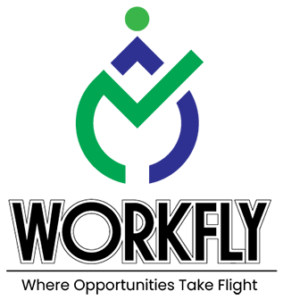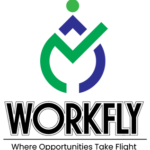Company Payroll vs Third-Party Payroll: Understanding the Differences
Payroll is much more than a routine monthly task that directly influences employee satisfaction, legal compliance, and the overall financial health of a company. With a growing workforce and increasingly complex regulatory environments, many businesses are reevaluating whether to manage payroll internally or to outsource it to specialized providers. This topic matters not only because payroll accuracy is essential for employee morale and trust but also because errors in payroll can lead to compliance issues, financial penalties, and operational inefficiencies. Understanding Company Payroll Company payroll refers to the process by which an organization handles all aspects of payroll management internally. This includes calculating employee salaries, withholding taxes, administering benefits, and generating payslips, all managed by the company’s own HR and accounting teams. Many large enterprises prefer this model because it allows them to integrate payroll seamlessly with other HR systems, ensuring consistency and tight control over sensitive employee data. Advantages of Company Payroll This flexibility is particularly advantageous for organizations with unique compensation structures or specialized benefits. Challenges of Company Payroll Understanding Third-Party Payroll Third-party payroll often referred to as payroll outsourcing is the practice of delegating payroll management to an external service provider. This provider, an expert in payroll processing, takes responsibility for calculating wages, handling tax deductions, filing compliance reports, and distributing payments to employees. In essence, third party payroll meaning encapsulates a model where organizations offload administrative burdens and entrust their payroll operations to specialized firms. Advantages of Third-Party Payroll This model also enables companies to benefit from automation tools that enhance accuracy and efficiency. Challenges of Third-Party Payroll Key Differences Between Company Payroll and Third-Party Payroll Feature Company (In-House) Payroll Third-Party Payroll Control and Customization Full control over payroll processesHighly customizable to meet unique business requirements. Limited customizationProcesses are standardized as per the provider’s protocols. Cost Considerations High fixed costs (staff, software, training) but may benefit from economies of scale in large enterprises. Lower initial costs Pricing based on service usage, which can be cost-effective for SMEs. Compliance and Risk The company bears full liability for compliance errors and regulatory changes. The provider assumes compliance responsibilities, reducing the company’s regulatory burden. Resource Allocation Requires dedicated internal resources, which can divert attention from core business activities. Frees up internal resources, allowing focus on strategic and revenue-generating activities. Data Security Data remains internal, offering higher confidentiality but requiring robust in-house security measures. Relies on the provider’s security protocols.Due diligence is essential to ensure data protection. Scalability Scalability can be challenging and may require significant additional investments. Easily scalable with provider resources, adaptable to changes in workforce size and complexity. Integration Seamless integration with existing HR, accounting, and ERP systems, tailored to company needs. May require additional effort for integration.Standardized systems might not fully match internal platforms. Considerations for Choosing the Right Payroll Solution Business Size and Complexity Budget Considerations Budget constraints are a critical factor. While company payroll may offer long-term benefits for large firms, the upfront costs associated with dedicated payroll systems and specialized staff can be prohibitive for smaller organizations. Third party payroll services typically charge on a per-employee or subscription basis, making them an attractive option for cost-conscious businesses. Compliance and Risk Management Navigating the complex landscape of tax laws and labor regulations requires specialized expertise. Third-party providers invest heavily in compliance resources, ensuring that payroll processes adhere to the latest legal requirements. This can significantly mitigate the risks associated with internal errors and non-compliance penalties. Data Security The security of employee data is paramount. Companies must weigh the benefits of keeping payroll information internal against the risks of entrusting sensitive data to an external provider. A thorough assessment of the provider’s security protocols, certifications, and past performance is essential when considering third party payroll options. Strategic Focus Consider whether managing payroll internally diverts attention from core business activities. Outsourcing payroll can allow management to focus on strategic initiatives such as market expansion, product development, and customer relationship management—areas that directly impact revenue growth. Future Trends in Payroll Management As businesses continue to evolve, so too do payroll systems. Emerging technologies and platforms are transforming how companies manage employee compensation. One notable trend is the integration of artificial intelligence (AI) and machine learning to predict payroll discrepancies, automate compliance checks, and personalize employee benefits. Digital Transformation and Employee Self-Service Another key trend is the growing emphasis on digital transformation. Modern payroll systems are increasingly incorporating self-service portals that empower employees to access their pay slips, update personal information, and manage benefits online. This not only improves transparency but also reduces administrative workloads. Enhanced Compliance Through Automation As regulatory landscapes become more complex, automated compliance tools are becoming essential. Third-party payroll providers are integrating advanced software that continuously monitors regulatory changes and updates payroll systems accordingly. This proactive approach to compliance helps minimize risks and ensures that companies remain on the right side of the law. Conclusion Deciding between company payroll and third party payroll is a strategic decision that hinges on several factors – company size, budget, complexity, compliance needs, and strategic focus. Each model has its distinct advantages: The Role of Workfly WorkFly is a trusted gateway for career success and top talent acquisition, making us an indispensable partner for both job seekers striving for career advancement and employers seeking to build strong, competitive teams. Our commitment is exemplified by a two-month support period, during which candidates receive continuous guidance and support, enhancing their chances of securing a suitable position.








